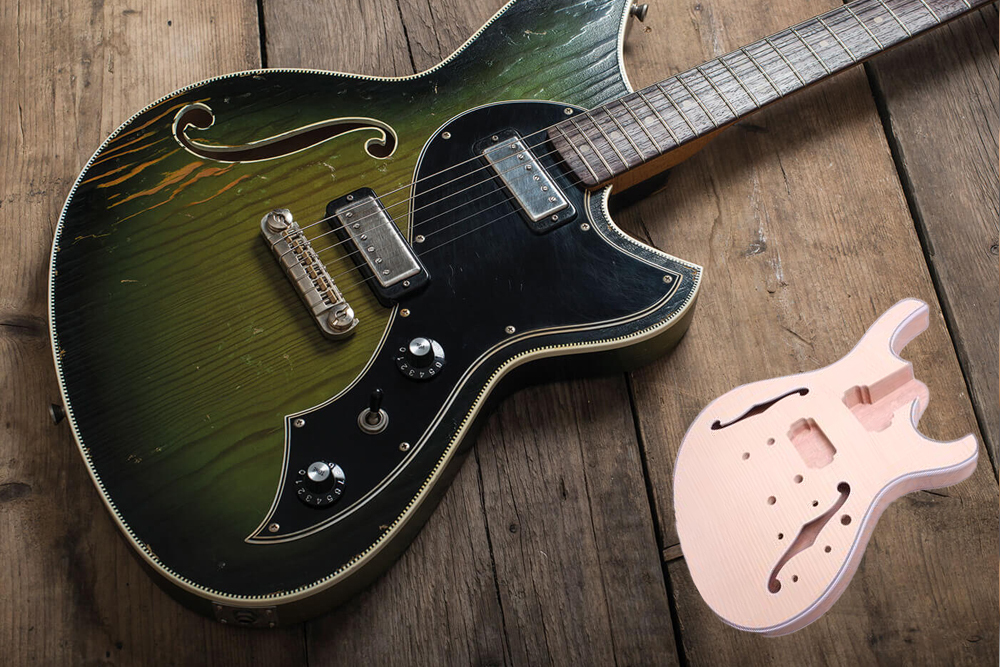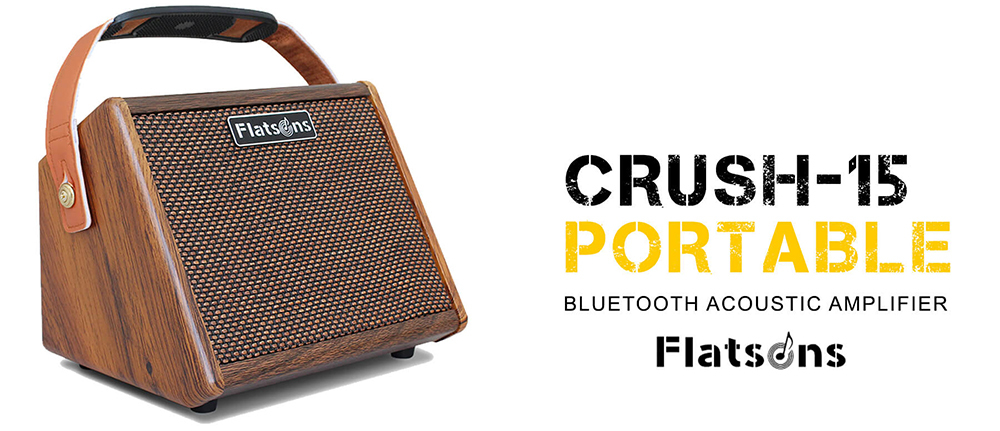
The first electric guitar is a very important purchase for any musician. You need to choose an instrument that will meet your needs and be reliable in the long run. But it does not have to be difficult to pick one that fits you.
When buying your first electric guitar, there are basically three things you need to know, the shape and size of the guitar, the sound, and the tone of the guitar.
Another thing you should also be aware of is, unlike acoustic guitars, you’ll also need to have an amplifier in order to produce sound from the electric guitar. So today we’ll be talking about choosing an electric guitar and related equipment.
What Shape and Size Electric Guitar Should a Beginner Use
The type of electric guitar can generally be broken down into three different groups, hollow-body, semi-hollow, and solid-body guitars. Each type has its own characteristics and pros and cons.

When it comes to sizes, the hollow-body guitar would be the biggest, but also the lightest due to its hollowness.

The semi-hollow is more or less the same size as a solid-body guitar and weighs only slightly lighter. This is because the hollowness only occurs under the areas where the 2 f-shaped holes are, the rest of the body is still solid.
When it comes to shapes, this is where the solid-body guitar excels. Because it's solid, you’re able to get in them in many different shapes from the classic Fender Stratocaster, Telecaster, or the iconic Gibson’s Les Paul shape.

You may also have seen other shapes like the explorer, flying v, or that one guitar with a handle in the body, made famous by Steve Vai and the brand Ibanez.
But at this point, the shapes and sizes of the guitars really do not make much of a difference. It’s ultimately up to what you like esthetically and the budget you have.
What Are The Different Sounds and Tones of Electric Guitars
Hollow-body guitars are most common in the jazz and blues genres. They have a warm unique sound that goes well with the genres.
One nice little feature about the hollow-body guitar is that you can still play it without plugging it into an amplifier due to its hollow body. Its sound won’t be as loud as an acoustic guitar, but for self-indulgence in an enclosed environment, they’ll do the job.
The downside of a hollow-body guitar, also due to its hollow body, is that it's more prone to feedback. The reason is the hollowness of the guitar will resonate, and its sound being picked up by the guitar’s pickups and amplified.
Semi-hollow body guitars are pretty much the same as hollow-body guitars in terms of appearance. The two key differences are, due to the structure of the semi-hollow body, they’re heavier than a hollow-body guitar.
The other difference is in its tone and resonance. Again, because its body structure is not entirely hollow like the hollow-body guitar, hence it does not resonate as much and hence has lesser feedback issues.
The semi-hollow body guitar also has a shaper, more metallic tone. Hence it’s more versatile in terms of what you can play with it, including rock and pop.
Solid-body guitars are the most common electric guitars on the market. Apart from the materials that it's made in, most of its sound and tone will be determined by what pickups you have.
However, due to their solid structure, they don't produce as much feedback when amplified at high volumes. But instead, they produce more sustain, which naturally makes them a very good choice for rock, metal, and pop music styles of playing.
Ultimately it's up to you to decide if you prefer a specific shape and sound or not. The body of the guitar is shaped in such a way that it produces its unique sound, and it is up to you to decide what feels good to you.
What Other Equipment Do You Need for Electric Guitars
The electric guitar is like an electric generator. Its pickups will convert string vibrations into electrical signals, which are then amplified through an amplifier. Hence, apart from the electric guitar itself, the next most important piece of equipment you’ll need is an amplifier.

In the case of buying your first electric guitar, and therefore your first amplifier, a 10-20 watts amplifier would be enough to start with for a beginner. With advanced technologies, many amplifiers now come equipped with Bluetooth capability, making connection seamless.
If you wish to learn more about how to pick the most suitable amplifiers for your electric guitar, we have an article here that you can read.

Alternatively, you may also hook your electric guitar up to your handphones or laptops, using an audio interface adaptor like iRig, and play it that way. Here’s an article if you want to know more about audio interfaces.
But for a better practice experience, it’s advised to still buy a physical amplifier.
Besides, many brands offer electric guitar start-up packs that often include an amplifier and other gadgets you may find useful, like straps, tuners, etc. To find out more about what you need as a beginner, here’s an article you can read.
Do Beginner Electric Guitarists Need Pedals
An electric guitar pedal is mainly used to alter the sound and tone of your guitar. So from the standpoint of a beginner, a pedal is not necessary to have in the beginning. But as you advance in your learning, you’ll eventually need to use one someday.
The types of pedals and their effects are endless, with the most common being the ‘Wah’ pedal and the ‘Distortion’ pedal. There are also pedals for the delaying effect, reverting effect, overdrive effect, etc.
As mentioned, a pedal’s purpose is to alter the sound coming out of your guitar. So naturally, the type of pedal you’ll need depends on the effects you want. In fact, you’ll most likely end up using more than one type of pedal. This is something you’ll learn along the way.
In conclusion, choosing the right electric guitar to play is not that difficult. An electric guitar is just another variation of an acoustic guitar, which allows you to have more effects and playing style.
There are no right and wrong rules when it comes to choosing an electric guitar. If it feels good and comfortable in your hands, that’s your guitar. The only thing that’s in your way is perhaps the price.
Rock On lnnl,






